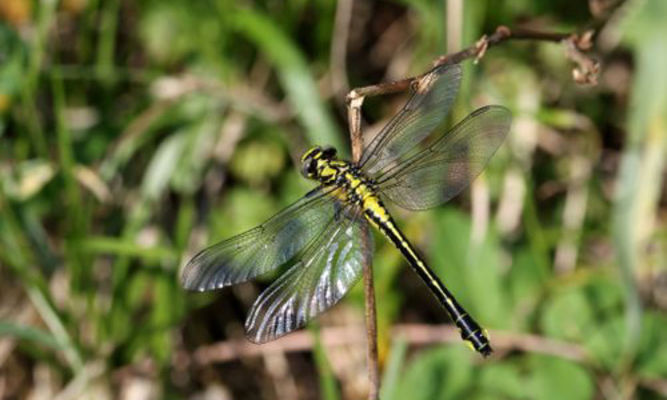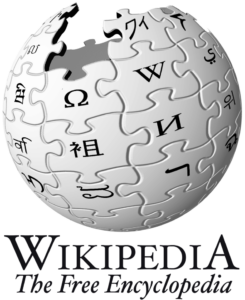Scientific Name: Gomphus sp Leach, 1815
English Name: Club-Tailed Dragonflies
Classification:
Kingdom: Animalia
Phylum: Arthropoda
Class: Insecta
Order: Odonata
Family: Gomphidae
Description:
Male: The overall coloration is dark brown to blackish, with greenish pale areas unless otherwise specified. The labium is pale, with the tips of the median and lateral lobes slightly suffused with chestnut brown. The tips of the maxillae are brown to black. The face is pale, with dark brown pits at the ends of the suture between the labrum and anteclypeus. There is slight darkening along the sutures between the labrum and anteclypeus and between the frons and postclypeus. The top of the frons is pale, with a narrow brown line at its base where it joins the brown vertex. The transverse postocellar ridge has only a few hairs, and its outer corners are pale. The occiput is pale, with a slightly convex crest, almost straight in the middle, and covered with brown pubescence. The pronotum has an anterior lobe that is yellow in the middle and brown laterally. The median lobe is pale with brown markings dorsally and dark brown laterally above the prothoracic coxae and around the prothoracic spiracle. The synthorax has a pale middorsal carina and collar. There is a mid-dorsal brown stripe widened anteriorly to become slightly wider than the pale area bordering it on each side. The antehumeral and humeral brown stripes are of about equal width, with the antehumeral not attaining the crest above but fused in its upper part with the humeral. The two are also joined slightly at their lower ends. There is a narrow brown stripe just anterior to the lower end of the first lateral suture that extends upward to the level of the spiracle, which is ringed with black. The second lateral suture is suffused with light brown near its upper end. The legs are brown to black beyond their pale basal segments, and the tibiae are unmarked with yellow. The medial surface of the prothoracic femora is pale. The wings have a yellow costa, brown to black venation, and a brown stigma. No useful specific characters were noted in the venation. The abdomen is mostly dark brown, becoming almost black on middle segments. The appendages are brown, with the inferior becoming black in the distal half. The superiors are about twice the length of segment 10 and only slightly longer than the inferior. In lateral view, each superior bears on its lateral surface a ventrally directed, rounded prominence, which is not visible in dorsal view. The inferior is upturned at its apex. In dorsal view, the branches of the inferior project laterally beyond the tips of the superiors for a distance about equal to the width of the tips of the branches. The posterior edge of the inferior forms a straight line in the middle, but the connections with the arching lateral branches are visible from this dorsal view. The posterior hamules are strongly rotated medially so that the tips and “shoulders” are hardly visible in lateral view. The penis has the terminal segment shorter than the third segment, and the “tails” of the terminal segment are very short and U-shaped. Female: The coloration is similar to the male holotype. The pale markings of the abdomen are more extensive, with a dorsal stripe almost full length on segment 7 and a small basal spot on 8 about one-eighth the length of the segment. The lateral pale areas are almost full length on middle segments. The occiput is strongly notched in the middle, convex on each side of the notch. The vertex has a small brown spine arising a short distance away from the transverse postocellar ridge, lying between each lateral ocellus and the eye. The abdominal appendages are almost twice as long as segment 10.
Habitat & Distribution in Bangladesh:
It prefers rivers and canals, although it also inhabits a wide spectrum of standing waters (both natural and anthropogenic).
Environment:
Freshwater, Terrestrial
Comments:
They are semi aquatic. Larvae are hatched in water. But they fly away when they got matured.






